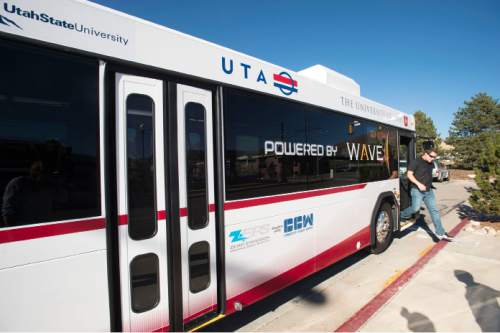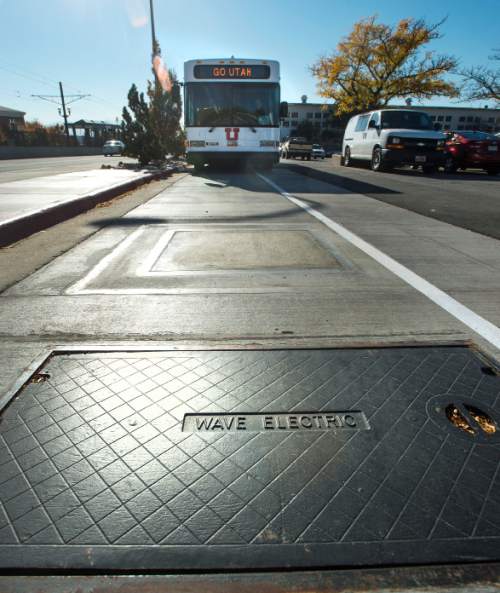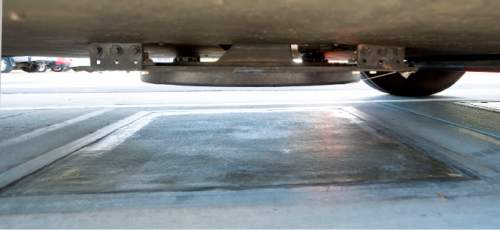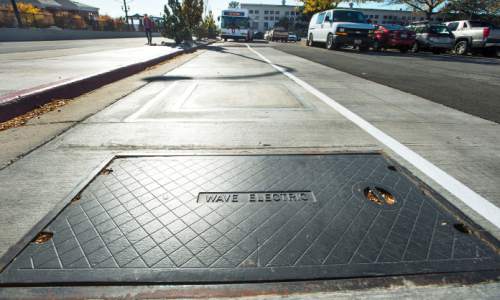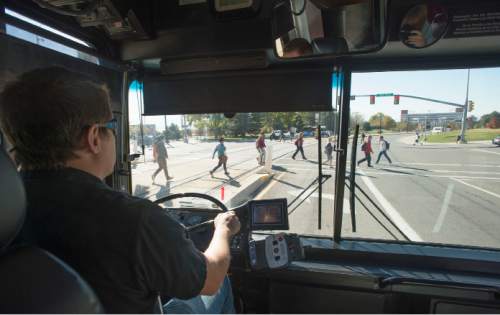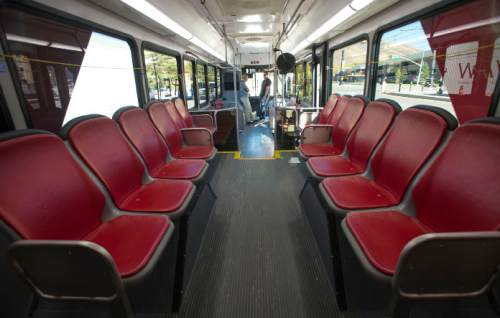This is an archived article that was published on sltrib.com in 2014, and information in the article may be outdated. It is provided only for personal research purposes and may not be reprinted.
A $2.7 million battery-powered bus is ferrying students and others from downtown to the U. And it doesn't need cables to do it.
The new wireless charging system removes many of the hangups associated with electric buses: Their batteries weigh up to five tons and force drivers to fumble with wires.
"That's always been the Achilles' heel of battery vehicles," Matt Sibul, chief planning officer at the Utah Transit Authority, said Tuesday.
Now, makers of the wireless chargers say they've eliminated that weakness. They're hoping cities nationwide will get on board and buy their product.
The company is already working with UTA on a wireless fleet in Salt Lake City, said Michael Masquelier, CEO of WAVE. "We're tapping into a cheaper, more stable fuel source."
Other communities such as Monterey, Calif., and McAllen, Texas, are also eying the Salt Lake City company's product.
There's no telling yet how much the commercial versions would cost, Masquelier said. WAVE officers expect the price to drop as they begin buying materials at wholesale prices, added Zachary Kahn, vice president of business development.
To date, a typical bus battery reliant on wires for a charge weighs about 10,000 pounds, or about a third of the vehicle's weight. WAVE's battery comes in at about a quarter of that, or 2,500 pounds.
The U. bus is expected to run from the school's TRAX stop on South Campus Drive through the center of campus sometime next year. The 50 kW shuttle will power up at the route's final stop near the Huntsman Cancer Institute. There, a small battery pad on its underside wirelessly picks up small amounts of "trickle" charge from an in-ground plate. The station isn't delicate: It can be plowed and shoveled over.
Officials sought the battery-powered bus for that route because they didn't want a typical diesel engine sputtering and polluting the heart of campus, said spokeswoman Annalisa Purser.
Two more buses and a charging system could further connect downtown Salt Lake City to the U. if UTA gets another federal grant. The agency is considering pulling from its own coffers to add more of the vehicles, Sibul added.
Such an investiment could help the Salt Lake Valley clear up some of its wintertime smog by cutting tailpipe emissions, Sibul said. In 20 years, he contends, the agency plans to have 200 such vehicles.
"We're not quite there yet," he said, "but we're getting closer."
WAVE began as an arm of Utah State University a few years ago, when it won $2.7 million in federal transportation grant money. Researchers there made a 20-foot test version of the bus, which ran on about half as much power as the U.'s 40-foot bus. WAVE doesn't make the vehicles, but it partners with companies that do.
Similar technology is at work in some California communities. And South Korea is credited with putting such technology to use at amusement parks.
Alma Allred, director of Commuter Services at the university, said the route will help the company refine the technology "for use on a broader scale."
@anniebknox


